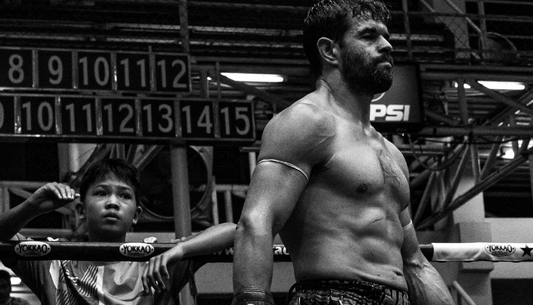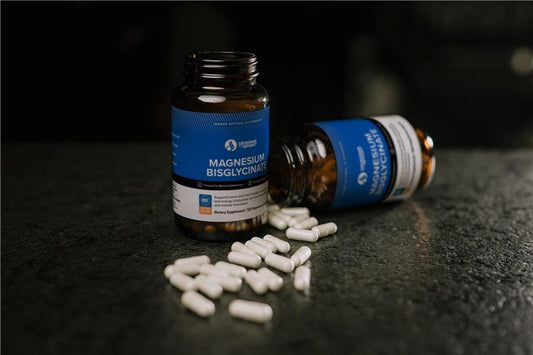What started as a childhood dream became a mission to empower at-risk youth through athletic training, education, and community.
The story of how Mark Sayer, founder of Sayerfit in Brooklyn, NYC, began raising money for an English program and coaching athletic development for at-risk kids in rural Thailand begins with how he first ended up in Thailand.

How It Began
Like many children born in the 1980s, his first exposure to Muay Thai came from Jean-Claude Van Damme movies like Bloodsport and Kickboxer. Although those films took many artistic liberties in portraying Muay Thai, they ignited a lifelong passion in him to learn more.
Fortunate enough to find a gym offering authentic Muay Thai training, Mark was hooked. After his first amateur fight at the age of 15, he dreamed of one day training and fighting in Thailand. When he finally made it there, he discovered he was one of thousands of foreigners who traveled to Thailand each year to train, and many to compete. While his dream wasn’t unique, the way he fulfilled it was. He had his first professional fight in a maximum-security prison. A journalist happened to be present and documented the match against an incarcerated mob hitman in a piece titled Bangkok Prison Blood Sport—a title that paid homage to his favorite childhood movie and gave his journey a full-circle feeling.

Today, Mark stays connected to his passion as a strength coach and nutritionist for a competitive martial arts team at Diamond Heart Striking & Grappling in New York City. As the team’s nutrition coach, he uses Designs for Sport supplements to ensure athletes receive the highest-quality, sport-safe products. He regularly recommends the Power Pack, Creatine Monohydrate, and Hydration Packs—especially after athletes cut weight.
Diamond Heart Striking & Grappling is more than a gym. It fosters a strong, values-driven community focused not only on winning fights but on being a force for good.
Mark first learned of the Wor Watthana safe house through a colleague, Alex Munro, who had spent time there while living as a fighter in Thailand. The gym, led by Frances and her husband Boon, is a true grassroots initiative. Frances, like Mark, came to Thailand to elevate her striking skills. After training at a gym in Bangkok, she met Boon and later visited his hometown in Issan. Upon witnessing the area’s extreme poverty, the couple decided to build the Wor Watthana gym to support local children.
The Reality For Many
Thailand continues to struggle with widespread poverty and inequality. Many international practitioners of Muay Thai are disconnected from these realities, despite the fact that icons like Buakaw and Sanchai hail from impoverished, rural regions. The heart of Muay Thai lies in Issan, where for many, the sport isn’t a choice—it’s the "choice of no choice."
Wor Watthana provides children with a home, access to education, and Muay Thai training. Through the sport, they gain discipline, confidence, and hope for a better future. In return, they are only asked to attend school and respect their coaches.
Beyond housing a half-dozen children, Frances also supports many youths in the neighborhood. Among them was a fifteen-year-old boy who had escaped being locked in a cage by a local farmer—sold by his own parents out of desperation. While poverty exists in the United States, Mark noted it rarely compares to the level of despair found in certain parts of the world.

Athletic Development
In his coaching practice in the U.S., Mark always begins with structural balance. This includes ensuring balanced strength between hamstrings and quads, developing the rear delts, and building a powerful lower back. These methods are applicable whether the client is a Muay Thai athlete, a BJJ competitor, or an office worker wanting to remain active with their kids.
Much of Mark’s training approach is inspired by the work of the late Charles Poliquin. To make these methods fun and accessible, he incorporates playful techniques. For example, ankle and hip mobility drills become "animal moves"—complete with quacks and growls. Scapular stability training becomes "superhero practice."

The English Program
Mark committed to funding the Wor Watthana English language program for 2025, primarily through proceeds from his Designs for Sport supplement sales and a shoulder pain relief program he developed.
The English program equips children with critical thinking skills and opportunities otherwise out of reach. The local education system often relies on rote memorization, with underpaid teachers who sometimes don’t show up to teach. By contrast, the English program encourages creativity and intellectual growth.

What Can We Do
In an age of hyperconnectivity through the internet and social media, people are more connected than ever—yet often feel more isolated. The constant exposure to global issues like war, hunger, and climate change can lead to a sense of helplessness.
Wor Watthana stands as proof that small efforts can create lasting impact. The children nurtured in this program will one day grow into adults capable of paying that kindness forward. For Mark, this work is not just a contribution to others, but something that brings meaning and happiness to his own life.
In a world where despair is universal and happiness is intertwined with suffering, one of the best antidotes is helping someone else. Through this, individuals can reclaim their power and create ripples of positive change.
To support the children of Wor Watthana, donations can be made at the link provided. Every contribution helps make a difference.
SUPPORT WOR WATTHANA




